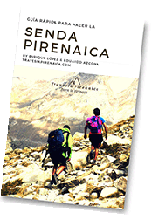Where can I find accommodation along the GR 11?

Along the route you will find shelters, hostels, campsites and some camping areas.. In the municipalities you will have access to hostels and hotels. There will only be a few exceptions where these options will not be available depending on how you have organised the stages, but this will not be common. Bring a tent or the option to bivouac, will give you flexibility when trekking.
Is there accommodation at the end of each stage?
In the classic 44-46 stage layout, there is usually a refuge or hotel at the end of each day. Where not, there is usually a free refuge, a campsite or the possibility to deviate from the route. to a nearby town.
📋 In the GR11 guide we have an exclusive section in each stage where we explain the different possibilities. There we offer the most trekking friendly options for the trekking lover, giving different alternatives, including also those patrons who support the project.
Doing the GR11 in one go, staying overnight in hotels and shelters is simple on paper but complicated to do. We will have to stretch out already long stages, shorten others, plan the route very well, book well in advance in some places and weekends, and the most difficult thing is to stick to the plan despite the weather and any unforeseen events, which there will be.

Quick guide
GR 11
with everything you need to know before undertaking the Pyrenean Path
Don't miss any adventure in the Pyrenees!
